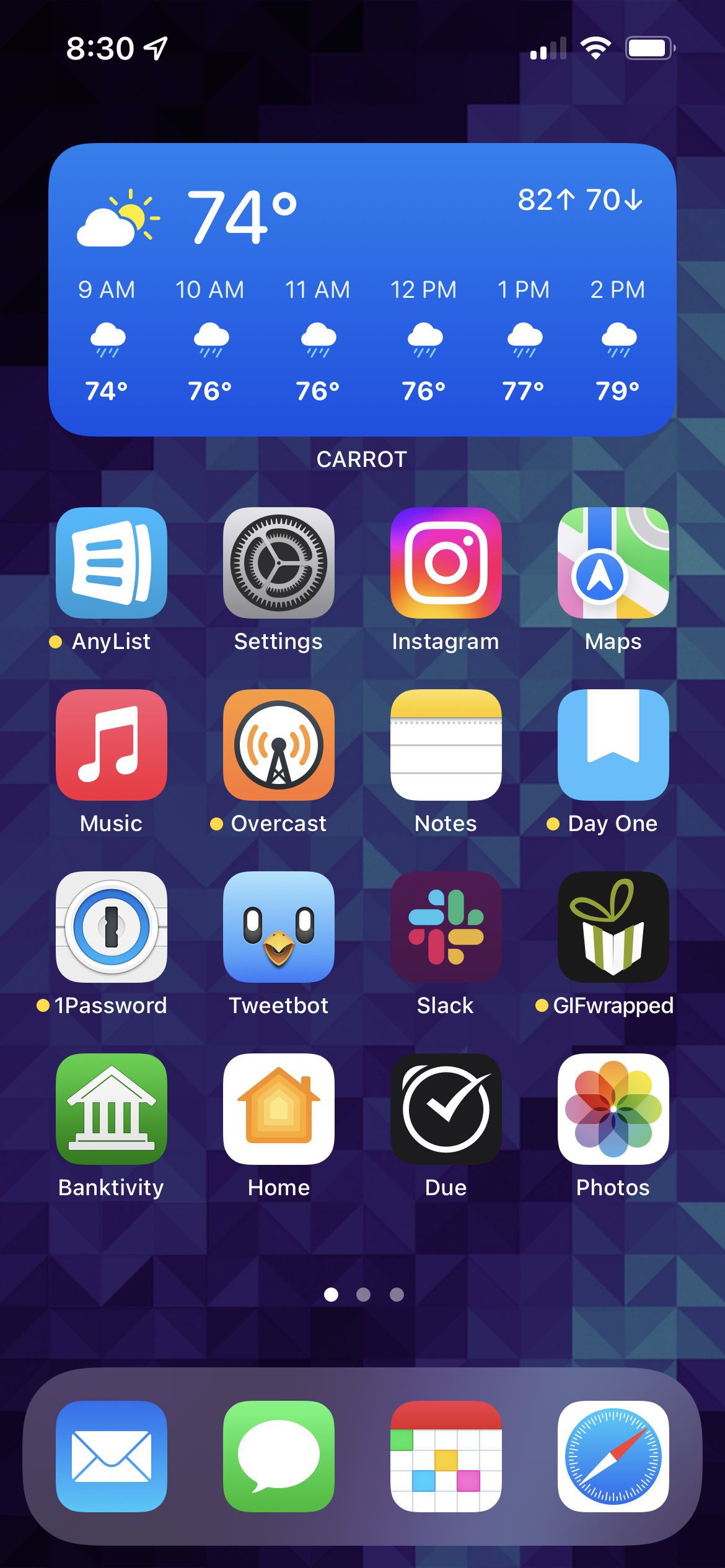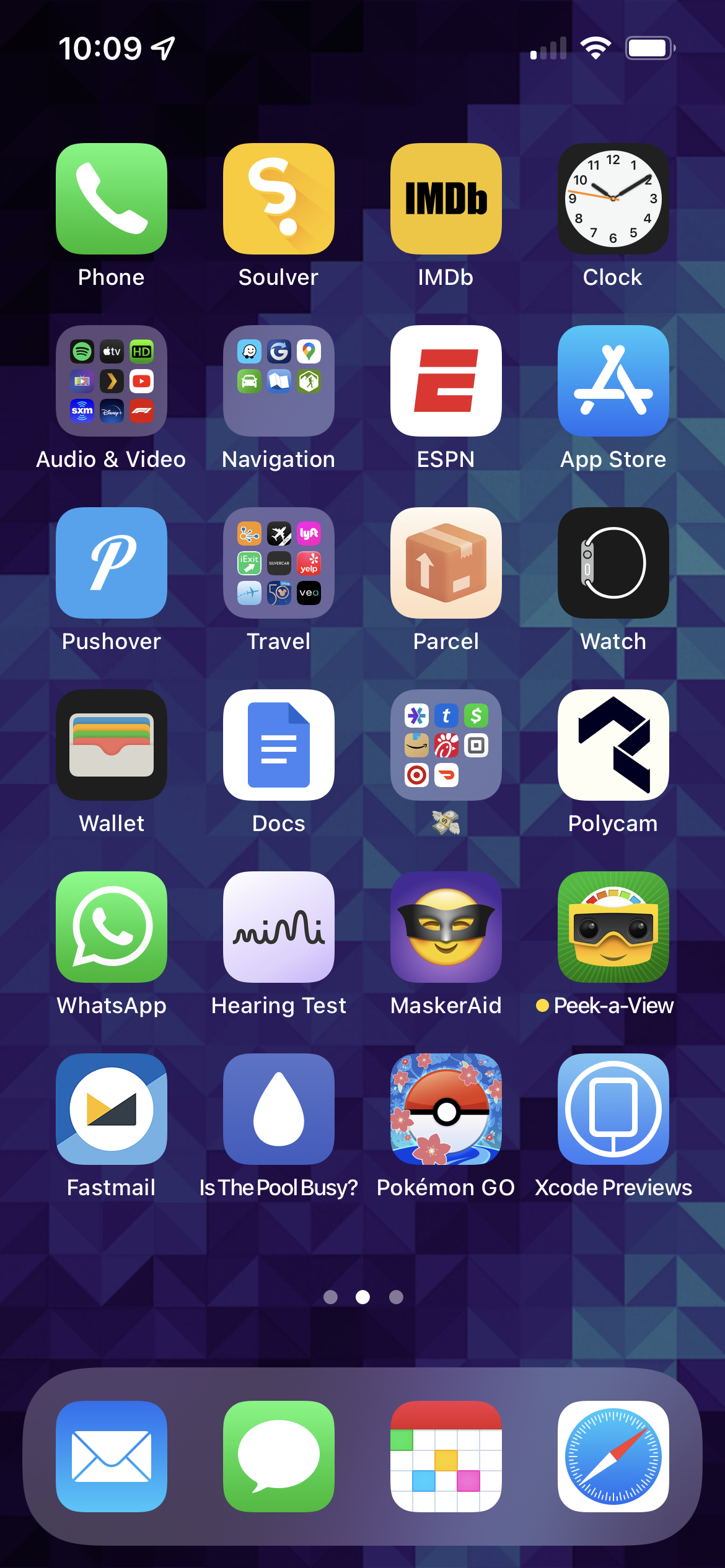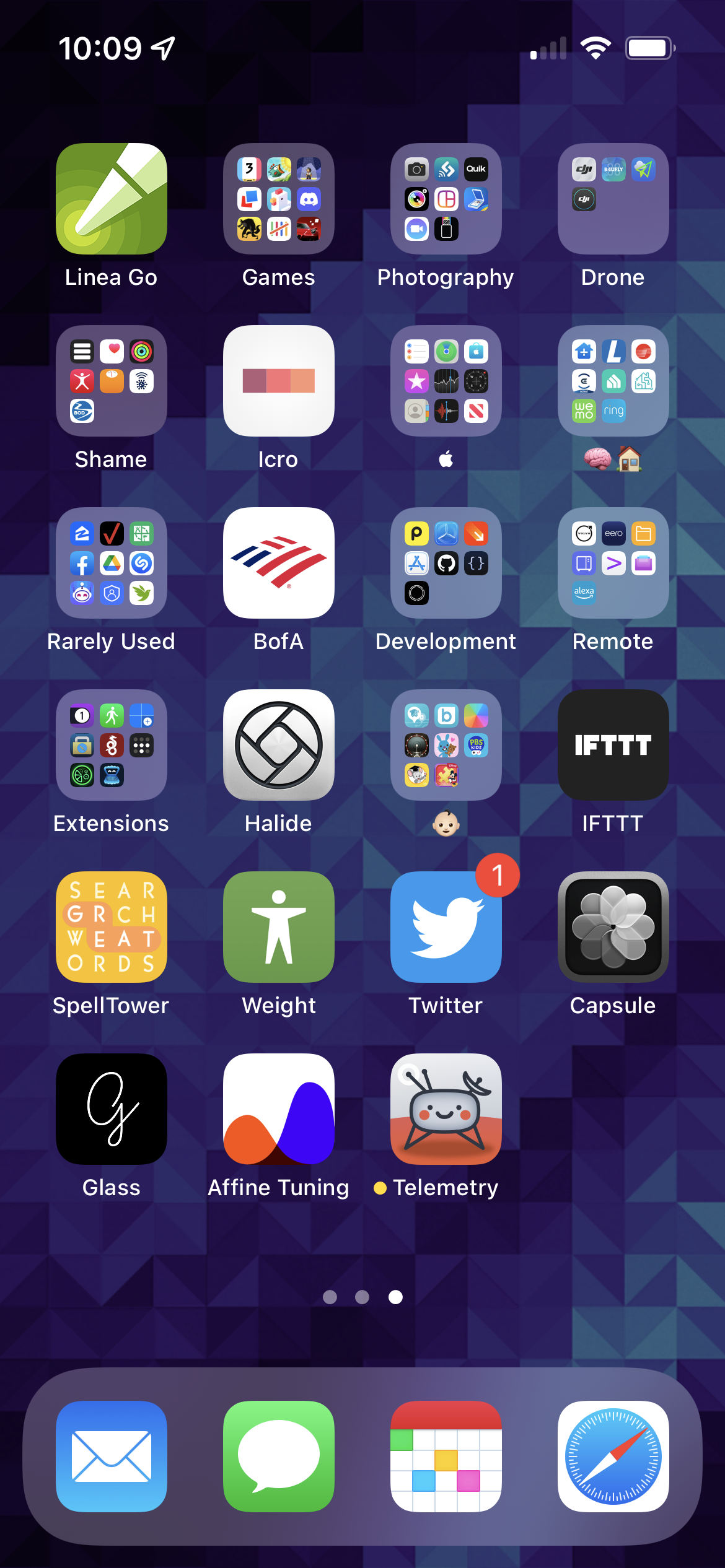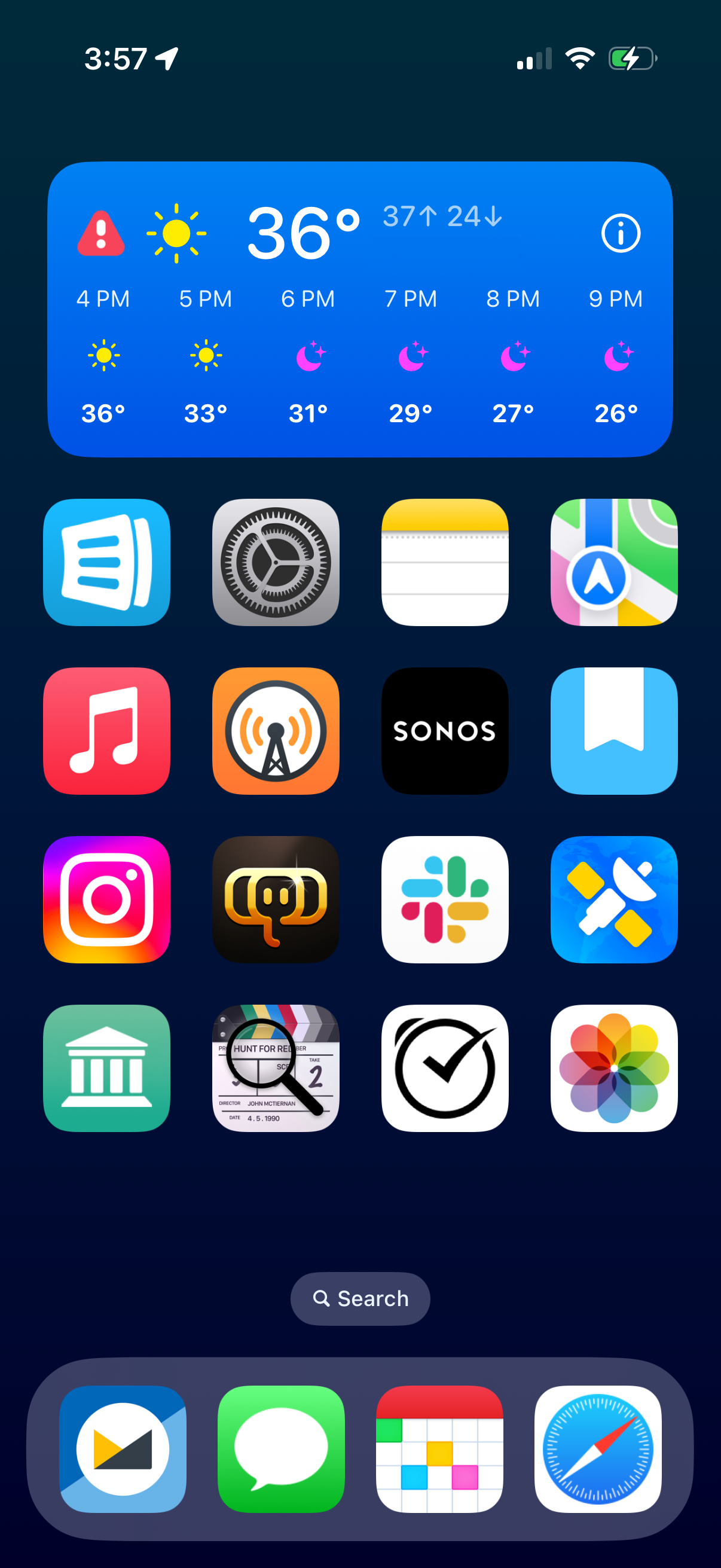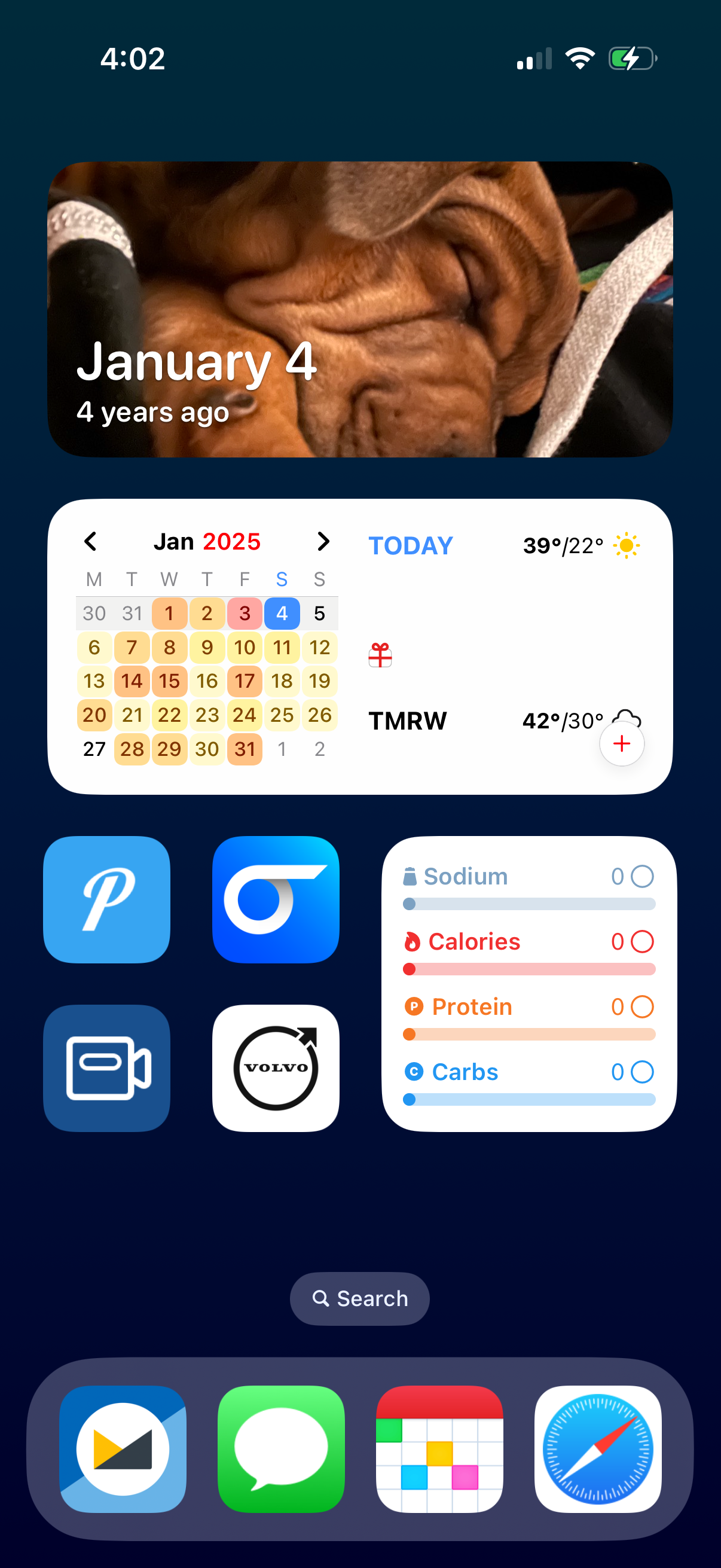For years, my iPhone’s home screens looked about like this:
The first screen was the one I used most times. It featured a Carrot Weather widget at the top, four rows of icons, and the dock. Maybe ⅔ of the time I used my phone, I was able to do so using this screen. I worked very hard to curate this screen.
The second screen was 80% or so of the remaining ⅓ of the time I used my phone. It was mostly curated — I didn’t worry about it quite as much as I did the first screen, but I did definitely rearrange things from time to time.
The third screen was a junk drawer, and it looked like it.
Over time, I got really sick of this. Muscle memory let me get to most apps on the second and third screens quickly, but it just felt… gross. There must be a better way.
I’m pretty sure it was either in chatting with Myke, or listening to one of his shows, that I heard him discuss a different approach. Though he’s not the only one to espouse working with your iPhone this way. I had long found this technique to be… well… lunacy. But around fall of last year, the idea of it started to really pull at me.
That approach — that new home screen thought technology — was Spotlight, and the App Library.
Myke discussed how he often uses Spotlight to get to his apps. Said differently, he searches for them instead of swiping around and tapping on the icon on his home screen. I knew of others who did the same thing, and it always seemed so inefficient and bonkers to me.
But the idea kept eating at me.
The more I thought about it, the more I felt like most of the time I used my iPhone really was concentrated on a handful of apps. The rest of the time could be any of the literally of hundreds of other apps I had on my phone. With my then-current approach of every-app-must-live-on-a-home-screen, I was optimizing a ton for apps I rarely needed.
So I ran an experiment.
I decided to rejigger my home screens and take a wildly new [to me] approach.
Here’s what I came up with:
The first home screen looks pretty much the same. There are some minor changes — the images of the old home screens are actually from late summer 2022. However, in broad strokes, it’s the same.
The second home screen is wildly different. There are three slots for widgets:
- The top slot is a stack for photos:
- Widgetsmith’s
On This Day - Photos’
Featuredphotos widget
- Widgetsmith’s
- The next slot are for status/monitoring:
- Fantastical’s
Event List + Calendarwidget - Parcel’s
Your Deliverieswidget
- Fantastical’s
- The third, half-width slot has Foodnoms’
Goals Summarywidget.
Also on the second screen are four frequently used apps that couldn’t quite make it to my first screen:
- Pushover, which is an incredible tool for sending yourself push notifications
- Sports Alerts, which is a no-fuss sports scores app with great Live Activities
- DS Cam (App Store link), which allows me to see my home security cameras
- Volvo, which allows me to precondition the climate in Erin’s XC90
There is no third home screen.
The key to this approach is to embrace Spotlight and — to a lesser extent — the App Library.
I didn’t think I’d be able to last this way. I never cared for Spotlight, and almost never opened the App Library. I generally found them both burdensome.
After a couple of days, I was entirely adjusted. I’m here to tell you that if I can make it work for me, you can make it work for you, too.
I started with this as an experiment last fall, I’ve come to absolutely love this approach. I’ve optimized my home screens for 80% usage; about 80% of the time, I’m opening one of the apps on one of these two home screens. For the rest of the time, I have Spotlight and the App Library.
Not only has this sped up opening the app I want, it’s also cut down on the number of badges I see. While I know I could control that in Settings, it’s a far easier solution to make them just… disappear.
This new home screen thought technology took a long time to really sink in, but once I embraced it, I almost immediately fell in love.
For more on my rationale and journey, you can hear Myke and I also discuss this on Analog(ue) episode #230.
